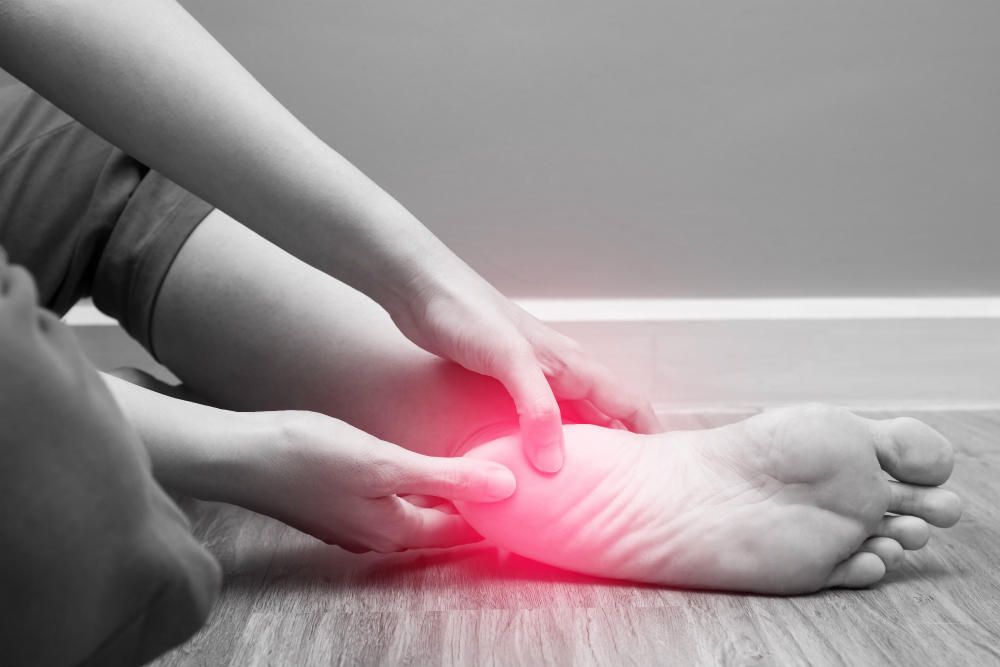Diagnostic Testing
The most important part of a patient visit is the history and physical exam, which allows the physician to become familiar with the patient and his/her problems. No diagnostic modality can compare to a through history and physical examination. However, there are some tests that can provide better understanding of nerve function.
The Ankle-Brachial Index (ABI) is a non-invasive diagnostic procedure utilized to identify peripheral artery disease (PAD), a medical condition characterized by the narrowing or blockage of arteries in the limbs, usually due to atherosclerosis. This can lead to complications like leg discomfort, ulcers, infections, and in severe cases, amputation.
The ABI examination measures and contrasts the blood pressure in the ankle with that in the arm. It involves the use of a standard blood pressure cuff and a specialized ultrasound instrument to assess blood pressure and flow. Sometimes, the test might require the patient to perform exercises like walking on a treadmill, with measurements taken before and immediately after the exercise to observe the impact of narrowed arteries during physical activity.
The ratio obtained by dividing the ankle blood pressure by the arm blood pressure yields the ABI. A ratio less than 1.0 could be indicative of PAD, with lower values suggesting a more severe condition.
A healthy ABI score ranges from 1.0 to 1.4. An ABI less than 0.9 signifies the presence of PAD. Scores below 0.4 point towards serious PAD. An ABI exceeding 1.4 could imply arterial hardening, necessitating further tests such as a toe-brachial index.
The significance of the ABI test extends beyond PAD detection. It can also provide insights into an individual’s risk for heart attack and stroke since individuals with PAD typically have a heightened risk for these health issues. This is because atherosclerosis is a systemic condition affecting arteries throughout the body.
Sudomotor function tests are a suite of diagnostic procedures developed to assess the autonomic nerves that control sweat glands, specifically in the feet. These tests have emerged as a critical tool in the detection and monitoring of peripheral neuropathies, including diabetic neuropathy, a condition often accompanied by sudomotor dysfunction.
The underlying principle of these tests revolves around the fact that the autonomic nerves regulate the sweat glands. When these nerves are damaged or impaired, it can cause abnormal sweat production, either excessive or insufficient, which these tests are designed to detect.
A typical sudomotor function test might involve stimulating the sweat glands in the foot and then measuring the sweat response. The most common method is the quantitative sudomotor axon reflex test (QSART). This technique involves using a small electrical current to stimulate sweat glands, and then quantifying the sweat response using a device that absorbs and measures sweat.
QSART is non-invasive and can be performed relatively quickly, usually within an hour. It’s a sensitive tool for detecting early-stage peripheral neuropathy, often before the onset of symptoms like pain or numbness. As such, it’s particularly useful in monitoring conditions like diabetes, where neuropathy is a common complication.
Another common technique is the electrochemical skin conductance (ESC) test. This test measures the conductance (or ability to pass electrical current) of the skin, which is directly related to the amount of sweat present. A decrease in conductance may suggest sudomotor dysfunction and potential peripheral neuropathy.
While sudomotor function tests can provide valuable information, they’re not definitive on their own. They’re usually used alongside other tests and assessments to build a comprehensive understanding of a patient’s neuropathic status.
Despite their relative simplicity, sudomotor function tests for the foot are a powerful tool in the arsenal of clinicians and researchers alike, allowing for early detection and monitoring of peripheral neuropathies, and aiding in the ongoing battle against conditions like diabetes that can have serious implications for foot health.
Contact Us
Office Hours:
Monday - Friday
8:00AM - 5:00PM
Tucson Foot & Ankle Institute:
7406 N. La Cholla Blvd.
Tucson, AZ 85741
Phone: (520) 545-0202
Fax: (520) 545-0201
© Tucson Foot and Ankle Institute. All Rights Reserved. | Privacy Policy


